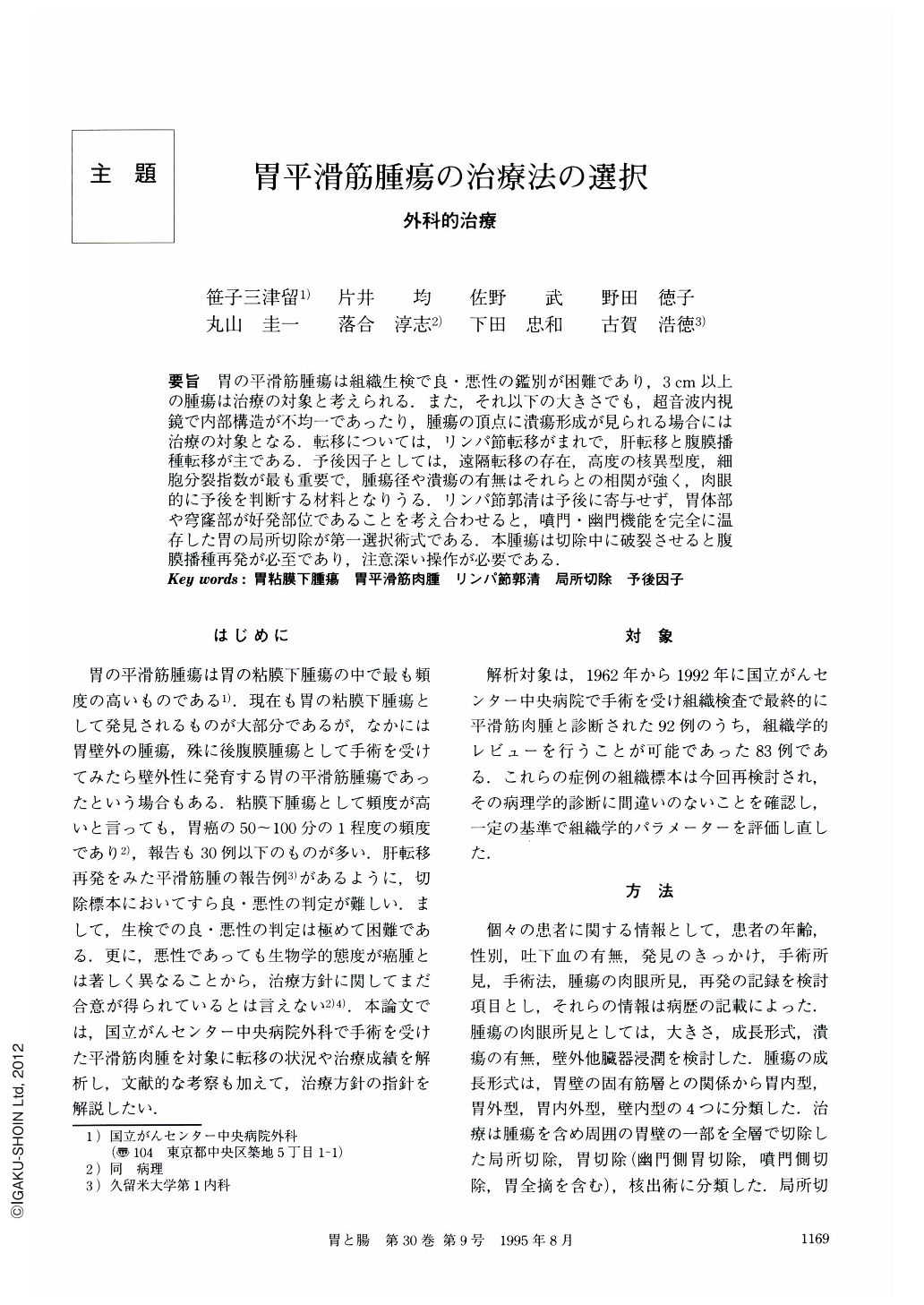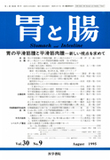Japanese
English
- 有料閲覧
- Abstract 文献概要
- 1ページ目 Look Inside
- サイト内被引用 Cited by
要旨 胃の平滑筋腫瘍は組織生検で良・悪性の鑑別が困難であり,3cm以上の腫瘍は治療の対象と考えられる.また,それ以下の大きさでも,超音波内視鏡で内部構造が不均一であったり,腫瘍の頂点に潰瘍形成が見られる場合には治療の対象となる.転移については,リンパ節転移がまれで,肝転移と腹膜播種転移が主である.予後因子としては,遠隔転移の存在,高度の核異型度,細胞分裂指数が最も重要で,腫瘍径や潰瘍の有無はそれらとの相関が強く,肉眼的に予後を判断する材料となりうる.リンパ節郭清は予後に寄与せず,胃体部や穹窿部が好発部位であることを考え合わせると,噴門・幽門機能を完全に温存した胃の局所切除が第一選択術式である.本腫瘍は切除中に破裂させると腹膜播種再発が必至であり,注意深い操作が必要である.
Based on a review and analysis of 83 patients treated in the National Cancer Center Hospital, Tokyo, between 1962 and 1993, it is suggested that solid submucosal tumors of the stomach should be resected when they are bigger than 3 cm, ulcerated or when they have heterogenous inner structure. Common sites of metastasis in our series were liver (9/14) and peritoneum (4/14). Lymph node metastasis could not be observed. In univariate and multivariate analysis, distant metastasis, severe nuclear atypia and high rate of mitosis were significant prognostic factors. Type of resection and nodal dissection had nothing to do with the patients' prognosis. Considering that these tumors grow most frequently in the gastric body or the fornix, wedge resection should be the first choice of treatment. In the three patients whose tumors were ruptured during surgery, recurrence occured in the peritoneum. Therefore any type of resection should be carried out cautiously.

Copyright © 1995, Igaku-Shoin Ltd. All rights reserved.


